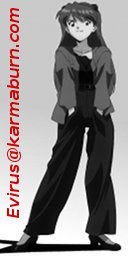|
|
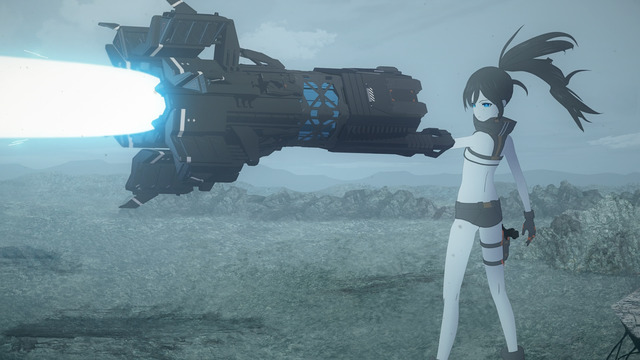
That's some nice shootin', Rock.
I sure have watched a lot of Black Rock Shooter for someone who claims not to care about Black Rock Shooter at all. I'm not even confident my understanding about Black Rock Shooter in general is even accurate. As far as I know, it is a Hatsune Miku song that was turned into a sort of popular music video, then an OVA, then a 2012 anime written by Okada Mari, and now Black★★Rock Shooter: DAWN FALL. I don't even know if Dawn Fall shares continuity with anything that came prior.
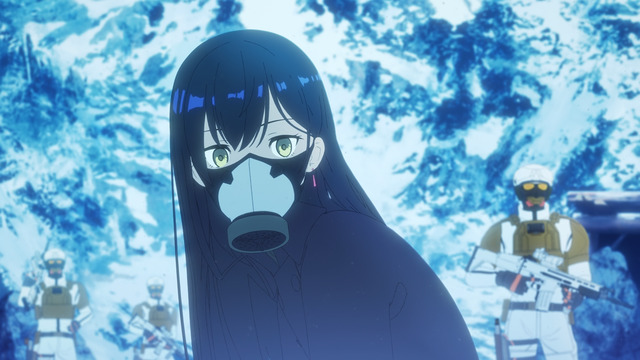
It would have been better if the human characters didn't wear these masks all the time.
What I do know is that Black★★Rock Shooter: DAWN FALL was 12 episodes of a grimdark future where there is only war. Well, war and rape. I don't mean this in a metaphorical sense, and I can see why you might think that considering a lot of what happens in the 2012 Black Rock Shooter was allegorical. No, I'm letting you know that a significant plotline in the 2022 anime involves young girls being raped literally to death.
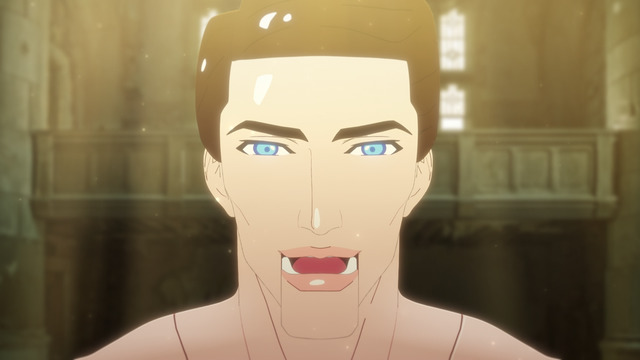
Is it better or worse that the rapist is a big freaky robot with limited emotional range?
So, is Black★★Rock Shooter: DAWN FALL actually good? Well, mostly not? I don't know if it's better for people who have strong attachments to the franchise. I can't claim I do, although I recognize Dead Master and Strength as characters who were present in previous Black Rock Shooter installments—that sort of thing. And I'm not fundamentally opposed to a series introducing characters, trying to make us care about them, and then having something terrible happen to them. I don't think I'm in favor of sadism, but I can appreciate that a show like this can still exist, and even be associated with an IP people presumably still value. Also, learning this was licensed by Disney was wild.
Posted in Black★★Rock Shooter: DAWN FALL | Tags: 3D, Air Power, Androids, Bad Things Happen to Good People, Built for War, Characters in Need of Better Shows, Girls With Guns, Initial impressions, Music, Rape, Recasting, Season Conclusion, Season Introduction, Sequels, Sex | Permanent Link
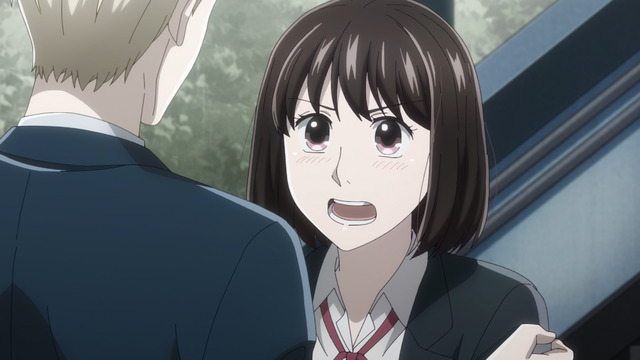
They're not flirting.
I started the Spring 2021 season with an entry covering both Koi to Yobu ni wa Kimochi Warui (It's Disgusting to Call This Love or KoiKimo) and Hige wo Soru. Soshite Joshikousei wo Hirou. (I Shaved. Then I Brought a High School Girl Home. or HigeHiro), so I guess I should have a post wrapping them up as well. I found KoiKimo to be a better series, perhaps because of its straightforward story. It also helps that KoiKimo leaves Ichika in control of her fate. It is ultimately Ichika's decision whether her relationship with Ryo will advance or not.
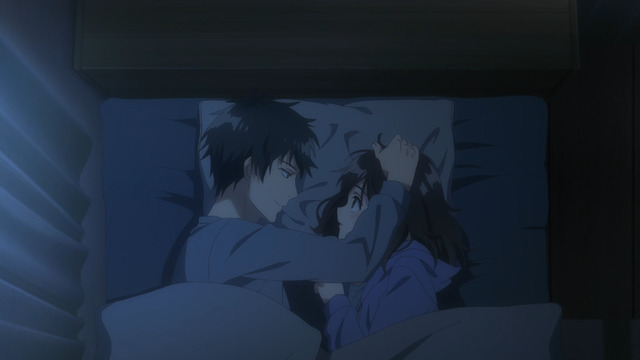
Platonic head pat.
Sayu does not have this luxury in HigeHiro. Maybe it's disingenuous to claim HigeHiro is about Yoshida "looking for something attractive to save" (my apologies to Liz Phair), but replace Yoshida's name here with "the audience's surrogate," and maybe it's not far off the mark. KoiKimo and HigeHiro both ended up where I expected, but Sayu had much less say over the path she took to get there.
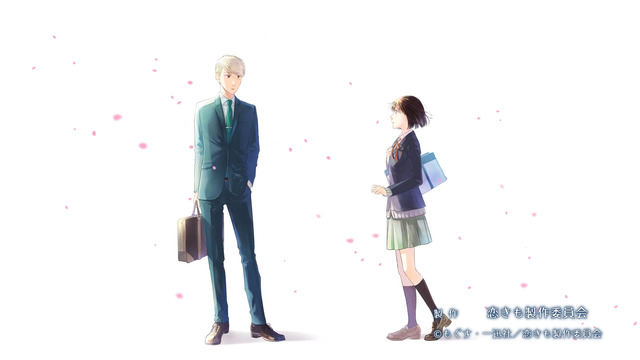
Making the end credits look more like the manga art was a nice touch.
In contrast, KoiKimo is an honest romance. There is no real mystery whether Ichika and Ryo will actually end up together or not, even though KoiKimo does introduce rival love interests for both leads. Moreover, the rivals are genuinely more sensible partners from every objective metric. However, the most obvioius impediment—the age gap between Ichika and Ryo—is never depicted as a meaningful obstacle. When it is finally viewed as a problem, its solution is entirely unsurprising.
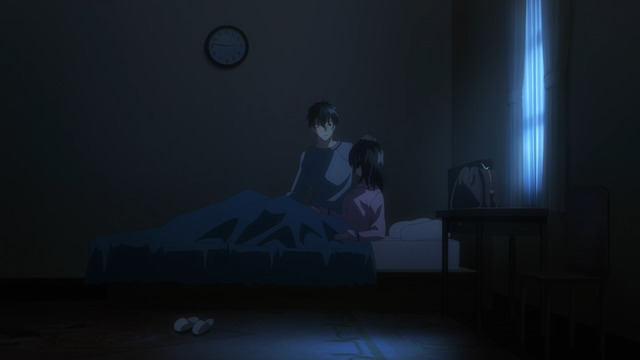
Platonic head pat.
The solutions to the challenges presented in HigeHiro are also fairly obvious, but the series insists on pantomiming a number of unconvincing feints. They're unconvincing because Sayu basically has no flaws, and Yoshida clearly feels something for her. He never has a reason to turn her away, and Sayu's rivals for Yoshida's attention are dubious love interests who quickly end up supporting Sayu anyway.
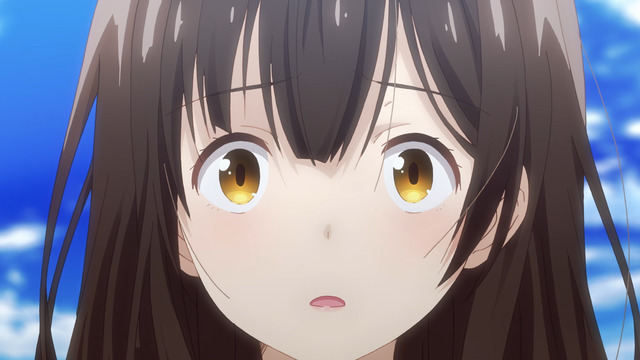
Relax, Sayu. Wonder Eggs are only 500 yen each.
In fact, Sayu's true adversaries are her lack of self-worth, her family's disinterest in her welfare, and the story's insistence at making Yoshida obtuse. Yoshida's behavior is baffling in HigeHiro, and not just because he denies being attracted to the sexually available high school girl living with him. Yoshida's behavior is baffling because he's willing to accept immediately on faith that Sayu would be better off returning to her home, without ever examining even the slightest bit the reasons why she ran away in the first place. It seems irresponsible to not at least contemplate the myriad awful situations that potentially compel teenagers to leave home and offer sex to strangers just to survive.
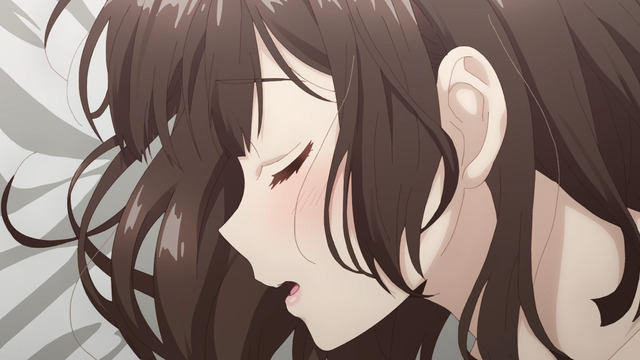
HigeHiro showed Sayu orgasming on screen.
Of course, the real reason Yoshida never asks is because the story can't let him or the audience know before the narrative is ready. It turns out the unpleasant situation Sayu fled wasn't that bad, but that's the case only because HigeHiro insists on rehabilitating its antagonists immedately after introducing them. This sort of cowardice is a significant weakness of HigeHiro, as it makes its conflicts fairly hollow. The challenges presented in KoiKimo are not intractable either, but at least they don't take on a fraudulent quality.
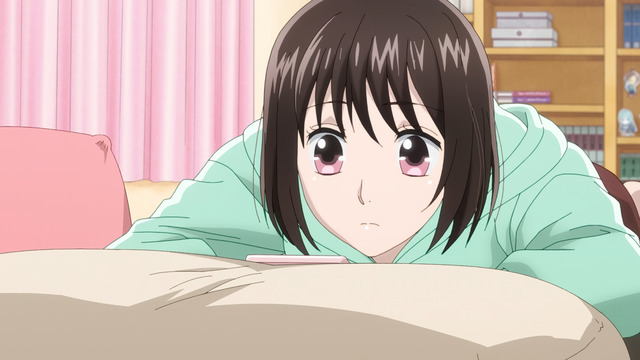
Ichika grew accustomed Ryo's nightly calls without realizing it.
KoiKimo succeeded by being forthright about its romance and committing to it unapologetically. In contrast, HigeHiro (like Yoshida himself) spends basically the entire series maintaining an unconvincing veneer of plausible deniability over whether or not Sayu is an actual love interest. At the risk of attracting accusations of being in favor of age-inappropriate pairings, I'm going to suggest HigeHiro does this to its detriment.
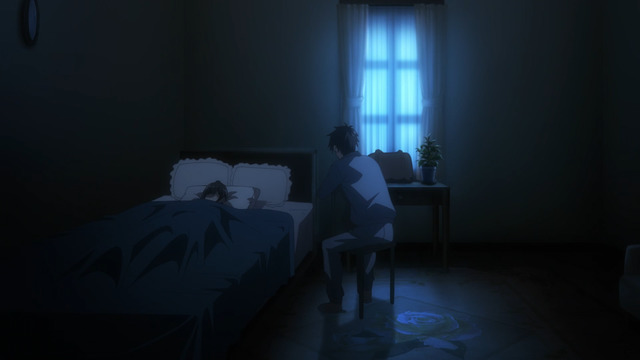
They had to put him in a chair watching her sleep
so people wouldn't insist they still fucked.
I suppose I can't speak for its source material, but the anime most certainly portrays Sayu as an eligible partner. Does HigeHiro provide Sayu with agency by having her test Yoshida's resolve each time she propositions him? Or does the series undermine Sayu's agency by presenting these moments solely so Yoshida can continue to rebuff her and showcase his unflagging integrity? I'm not answering this rhetorical, but I think we all know.
Posted in Hige wo Soru. Soshite Joshikousei wo Hirou., Koi to Yobu ni wa Kimochi Warui | Tags: 16-year-old love interests, Bad Things Happen to Good People, Bend Her Over a Kotatsu, Built for Sin, Christmas Cake, Compare and Contrast, Fan Service, Hanakana Distortion Field, Hanazawa Kana, Harem Comedy, Light Novels, Love Confessions, Love Triangle, Manga, May-December Romances, Plying Girls, Rape, Romance, Season Conclusion, Sex, Spoilers, Spring 2021, tsundere, Unrequited Love | Permanent Link
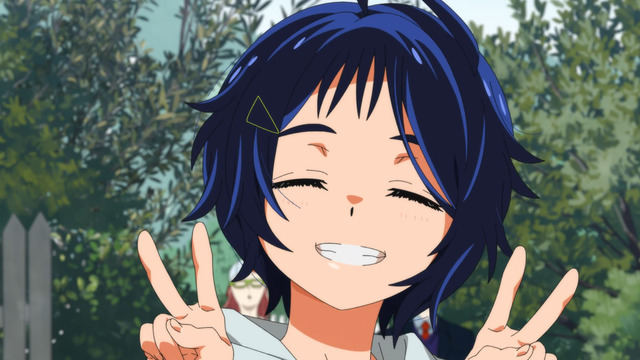
Double-peace Ai, eh.
I went into Wonder Egg Priority essentially blind, as its promotional materials offered no meaningful details about the series. What I found was an extremely strong start with impressive visuals and an engaging story. Throughout most of the show's run, it maintained this high standard, despite evidence of frantic production difficulties that eventually forced an operational pause. This relief proved insufficient, and the series finale itself pushed to the right three months.
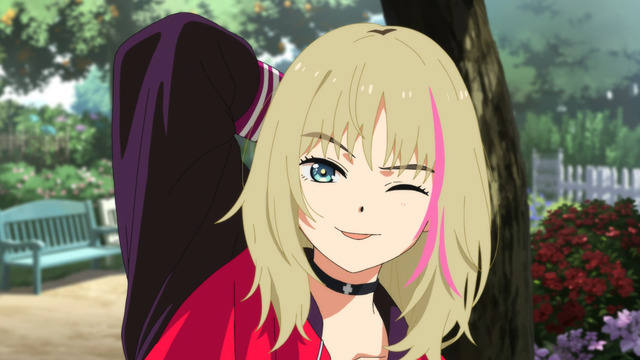
So, are you going to go back to being an idol?
I suppose it was naïve of me to presume the studio would dedicate this additional time to getting the Wonder Egg Priority ending just right. I can't verify the veracity of the claims I've read about what ultimately happened with the production effort, but what actually dropped frankly made me nostalgic for the Gainax endings of yore. No, I don't think we're going to get The End of Wonder Egg Priority a couple years later, and it's not as if episode 13 enlisted the assistance of paper dolls on sticks, but the final episode did not seem like it benefited from three months of refinement—certainly, the writing did not.
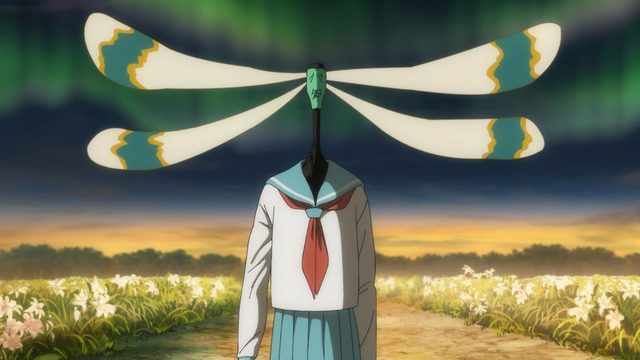
Why, though?
For one thing, there were reports the final episode of Wonder Egg Priority would be a one-hour special. It actually turned out to be about 45 minutes, fully half of which was a clip show recapping the previous 12 episodes. So I'm curious whether this resulted from misunderstandings and optimistic assumptions on the viewership's part, or if those reports would have been accurate were it not for impassable obstacles impeding the journey from desire to reality. (Most likely the latter, I think.)
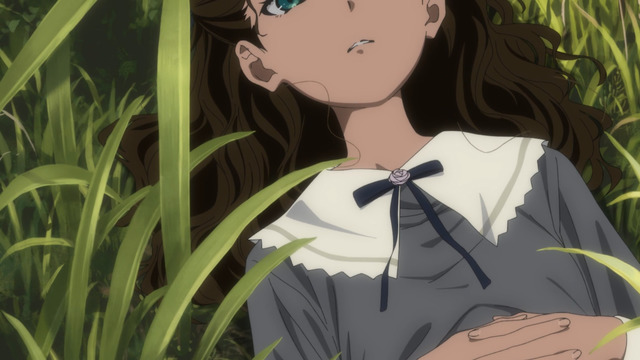
How are you feeling, Neiru? Good?
This is a long-winded way of saying the conclusion to Wonder Egg Priority made no sense. Absent a more compelling example, I think I'm going to end up adding it alongside The Rise of Skywalker and the Game of Thrones finale as the third leg of my tripod of endings so flawed that they manage to undermine everything good that came before. Curiously, though, I can't quite claim the final episode of Wonder Egg Priority itself is bad. It's not unsalvageable. It's largely its lack of resolution and its role in the narrative itself that are bad.

I want to say it was murder, but there were witnesses, albeit
ones all conveniently looking the wrong way. Unless....
I guess this means it's the creative decisions themselves that are bad—specifically, every effort to explain the mechanics driving the story. That is, everything involving recorded dreams, parallel worlds, robots, Acca, the one who is not Acca, Frill, or Frill's weirdo minions detract from everything else presented in Wonder Egg Priority previously. In fact, let us also add the support animals to this category, even if they do taste like chicken.
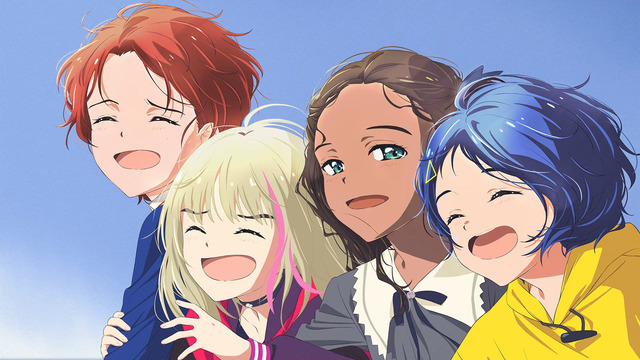
Congratulations.
Despite all of this, I still regard Wonder Egg Priority as one of the best shows of the Winter 2021 anime season. I'm just at a loss as to how to characterize it for someone approaching it for the first time. I guess just watching half and walking away is an option. I suppose it depends on the inquisitive potential viewer's tolerance for unsatisfying endings. I'm certainly no stranger to them at this point, and I was never too fussed about so-called "Gainax endings" or "Gonzo endings" to begin with. I wonder if there is a place in the world for the capital-C, capital-W "CloverWorks ending" as well. I wonder egg if there is.
Posted in Wonder Egg Priority | Tags: Androids, Bad Things Happen to Good People, Fat Anime Characters, Gainax Ending, Hair, Idols, Rape, Season Conclusion, Spoilers, Spring 2021, Star Wars, Winter 2021 | Permanent Link
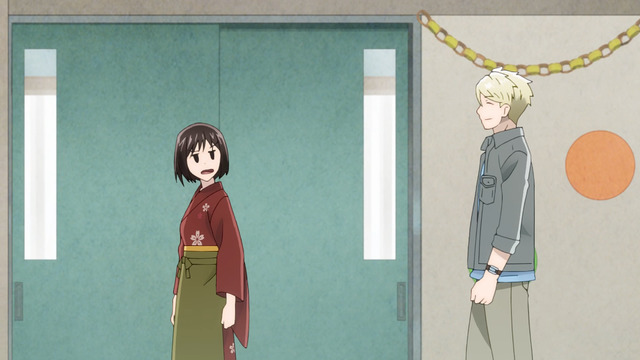
Stalker distancing.
News that the Spring 2021 anime season would feature TWO shows about adult men paired with high school girls created ripples across the Twitter, but even this mild outrage waned after viewers discovered neither show was as torrid as anticipated. Descriptions of Koi to Yobu ni wa Kimochi Warui (It's Disgusting to Call This Love, A.K.A. Koikimo) in particular concentrated on elements that ranged from misleading (characterizing its male lead as "a womanizer") to outright untruthful (e.g., calling him "sex-crazed...with a wandering eye for women"). At the risk of stereotyping too much, I suspect more attention should have been paid to the fact that the Koikimo manga is described as josei (i.e., for adult women) instead of seinen (i.e., for adult men who miss fucking teenage girls).
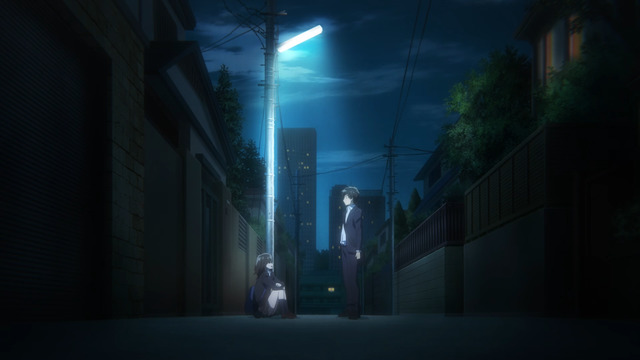
I was too bothered by Sayu's lack of luggage to make a Fate/stay night joke.
Curiously, Hige wo Soru. Soshite Joshikousei wo Hirou. (Higehiro: After Being Rejected, I Shaved and Took in a High School Runaway) seemed to attract less pre-season attention than Koikimo, but perhaps its original novels and manga adaption were already known well enough to deflect unwarranted speculation that it was going to be a smutty romp. This, despite its synopsis outright stating that its characters meet when the titular teenage girl, Sayu, offers sex in exchange for a place to stay. Instead, Higehiro is about a man, Yoshida, who insists he is not attracted to the JK crashing at his place. The series begins with Yoshida being rejected by his long-term crush (his boss at work, no less) who claims she is already seeing someone. He is so devastated that he seemingly does not even notice she was CLEARLY LYING.
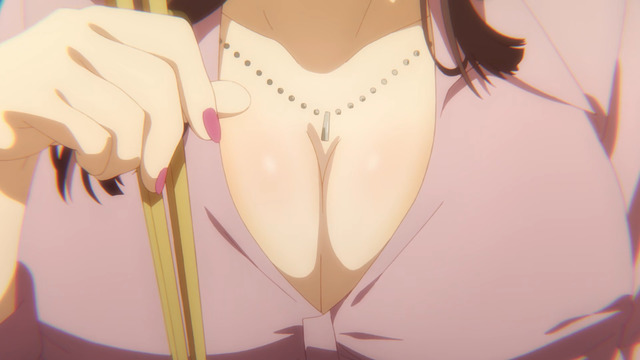
Dude, you're staring.
Higehiro also draws attention to Yoshida's insistence that he is not a "nice guy" for letting Sayu live with him without strings attached (unlike everyone else she has stayed with during her previous six months as a runaway), but rather that the other men she has known are despicable people. Yoshida also repeatedly insists he is not attracted to Sayu because he only likes women with large breasts, but then the show promptly undercuts him by immediately alerting (and repeatedly reminding) the viewer that Sayu's boobs are also comfortably big.
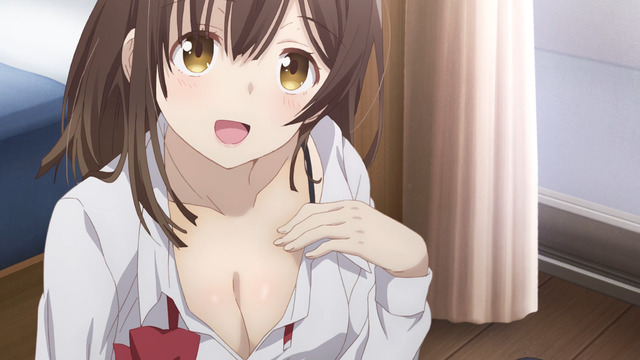
Higehiro even quantifies the comparison.
This is where I lose the ability to predict the path Higehiro will take. There is enough fan service and "male gaze" to the anime that we are obviously supposed to see Sayu as a legitimate love interest of Yoshida's, despite (or perhaps because of) his loud denials. But the show also retains the harem elements by keeping the CLEARLY LYING boss lady and deliberately slapdash co-worker near as potential romantic rivals. If I had to guess how this story ends, I would expect Yoshida's support to put Sayu on a path to success before re-uniting the two after a multi-year timeskip apart that has given Sayu time to become a self-sufficient adult with even bigger boobs than ever. Alternatively, we'll get a cop-out non-ending ending, potentially with all four of them living together for contrived reasons.
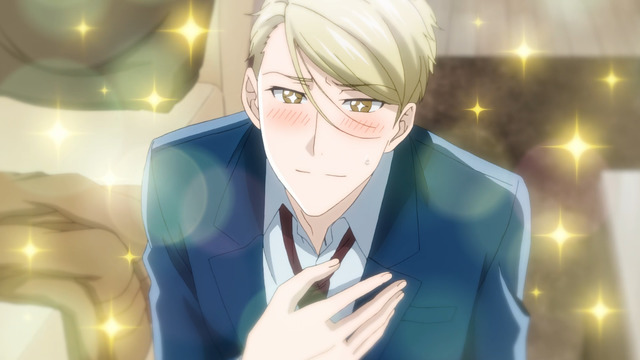
You can tell he's sincere because of the sparkles.
While Higehiro is about a man who denies being attracted to the teenage girl living with him, Koikimo is about a man openly and aggressively wooing a high school girl 10 years his junior. At this point, I think it is necessary to acknowledge the tropes that govern this story's boundaries. Ryo and Ichika meet by chance and a suspension bridge moment sparks his sudden obsession with Ichika, who is coincidentally classmates with Ryo's kid sister, Rio. Fortunately for Ryo, his sister not only approves of his infatuation with her friend, but even volunteers as his wingman to provide opportunities for him to get closer with Ichika.
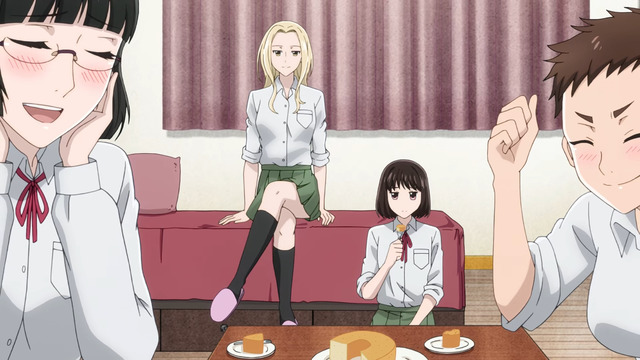
Rio's anime bed is made of concrete.
Moreover, Ichika's own mother approves of Ryo's courtship, despite Ichika's clear displeasure. It is probably worth pointing out that Ryo has apparently never had to pursue a love interest before. He is not a pick-up artist chasing after fresh prey. Instead, girls and women have thrown themselves at him his entire life (Ichika's and Rio's classmates all unanimously agree Ryo is exceptionally handsome), so this is an entirely new experience for him.
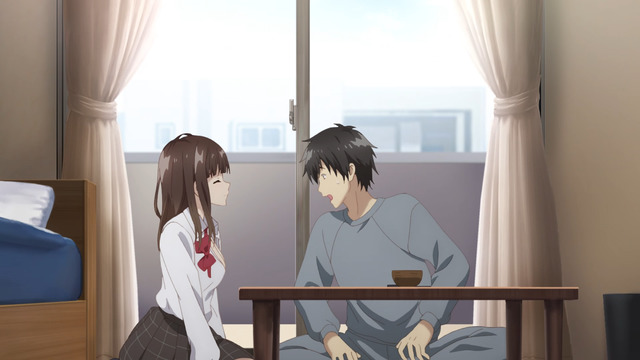
Dude, you're staring.
So what are Koikimo and Higehiro both missing? Lust. In the case of Koikimo, Ryo is clearly, genuinely smitten with Ichika, but he is arguably more drawn to her disinterest in him than he is to her physical appearance. Ichika is presented as being fairly unremarkable among her peers, and her own best friend describes her as "normal" (although at least one boy at her school has taken a liking to her). In the case of Higehiro, it takes three episodes of the show loudly signalling that Sayu is comely and sexually available before Yoshida finally admit he finds her attractive. However, his refusal to sleep with her is predicated on a critical, foundational cornerstone to the narrative's integrity, so I don't expect the story can too easily reverse this stance even if the audience comes to think he protests too much.

She is upset because she is pleased.
After four episodes of Koi to Yobu ni wa Kimochi Warui and three episodes of Hige wo Soru. Soshite Joshikousei wo Hirou., I enjoy Koikimo more than Higehiro. Neither series is especially realistic (although I could believe Higehiro, despite the melodrama, were it not for the CLEARLY LYING Christmas-cake boss lady and the co-worker who deliberately fucks up her work for Yoshida's attention), but I find Koikimo more amusing. I can't rule out the possibility that I'm simply more enamored of Ichika's seemingly endless barrage of disgusted faces than I am with Sayu's "pretty big for a high school girl" bosom, though.
Posted in Hige wo Soru. Soshite Joshikousei wo Hirou., Koi to Yobu ni wa Kimochi Warui | Tags: 16-year-old love interests, Bend Her Over a Kotatsu, Built for Sin, Christmas Cake, Compare and Contrast, Harem Comedy, Light Novels, Love Confessions, Love Triangle, Manga, May-December Romances, Plying Girls, Rape, Romance, Season Introduction, Sex, Spring 2021, tsundere, Twitter, Unrequited Love | Permanent Link

I still don't actually know what "Alicization" means, unless it involves energy beams to the face.
The final cours of Sword Art Online: Alicization - War of Underworld began on Saturday, picking up where it left off six months ago. First, a quick overview: Sword Art Online is the franchise. Alicization is its third major season (and once complete, will be four cours long—as long as the first two seasons combined). War of Underworld is the double-cours second half of Alicization.
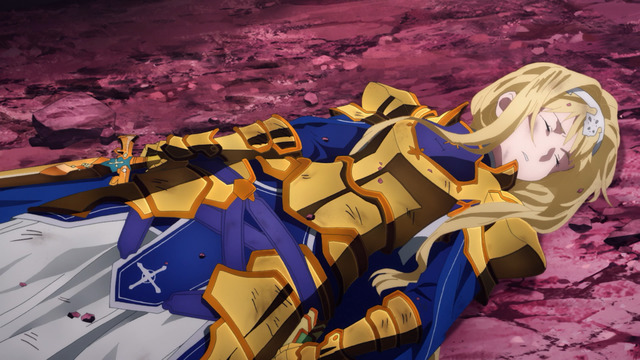
I bet that sleep spell wouldn't have worked if Alice S. 30 had an N95 mask.
The original SAO cast was absent from most of the previous 12 episodes, which focused instead on Alice Sythesis Thirty, a UCLA Bruin introduced for the third season. Kirito has been present during War of Underworld, sort of, but relegated to mostly convalescing in a wheelchair while Alice S. Thirty pushed him around so he could be nearer to people who want him dead.
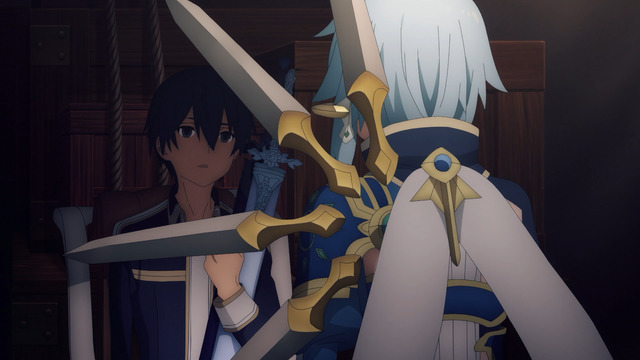
He's probably trying to figure out what's going on with your outfit.
Kirito has been showing signs that he's still awake somewhere behind his dead-fish eyes, so it's a cinch he's going to make his grand return at some point. Kirito's, uh, new best friend Eugeo also features prominently during the opening and closing credits of the new season, so maybe he's going to be back, too.
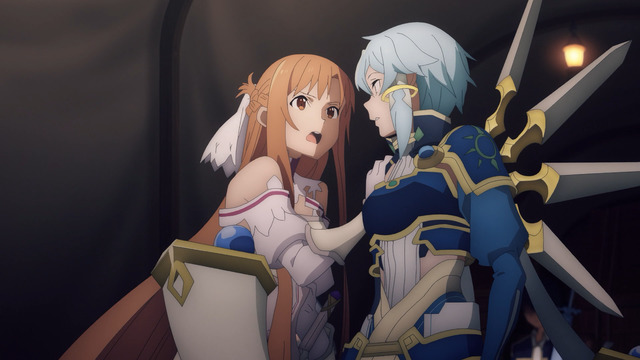
Somehow Asuna is the only one to recognize flying is a big deal.
Asuna and Sinon both joined the titular war at the end of the previous cours. Leafa and Klein logged in during the first episode of the current cours. So yeah, they're getting the old crew back together for the season's big finish. Fans of the original cast who have been dying for more Silica and Lisbeth deban presumably won't have to wait much longer. First-season characters are not the only thing that has returned, though. Sexual assault is also back.
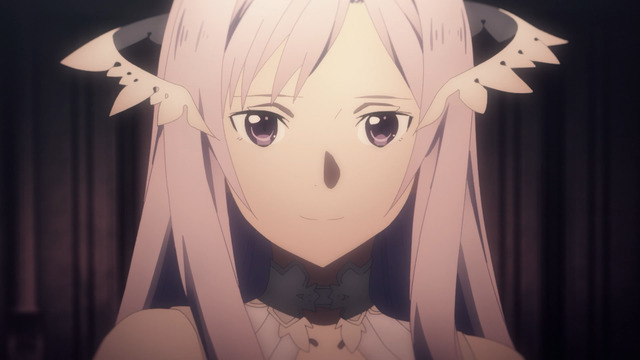
I'm including the time the pope Jedi mind fucked Eugeo.
Actually, sexual assault has never really left. Attempted rape, etc., is such a common occurrence in the Sword Art Online franchise that I'm not sure I could name all the times it appears without accidentally forgetting a scene or two. I don't even object to its inclusion on principle, necessarily—it's just always contrived and presented so poorly and obnoxiously, though.
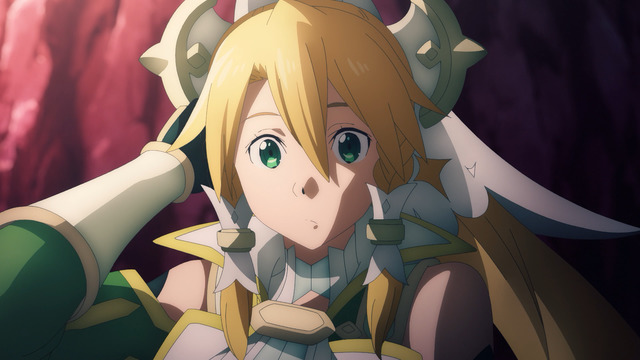
I can't rule out the possibility Suguha just enjoys suffering.
In the instant case, Leafa logs in, makes a new friend, and is instantly tentacle raped by an exaggerated over-the-top villain (the most common sort of villain in SAO). It goes beyond even the infamous first-season example involving Asuna. (That's specific enough to identify which one I mean, right?) Leafa suffers through it for entirely unconvincing reasons.
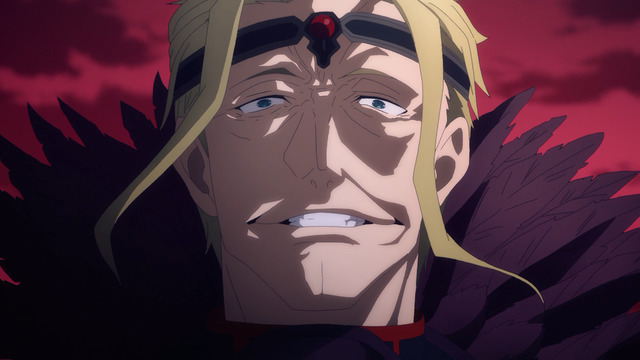
You can identify SAO villains because they all make this face.
Maybe Sword Art Online includes these scenes and presents them in this way because possibly a significant majority of SAO fans enjoy and appreciate them, but I'm optimistic enough to hope it's done out of deference to Kawahara Reki's light novels. I don't know how much the SAO anime deviates from the source material, but I sort of get the feeling that it's not doing it enough.
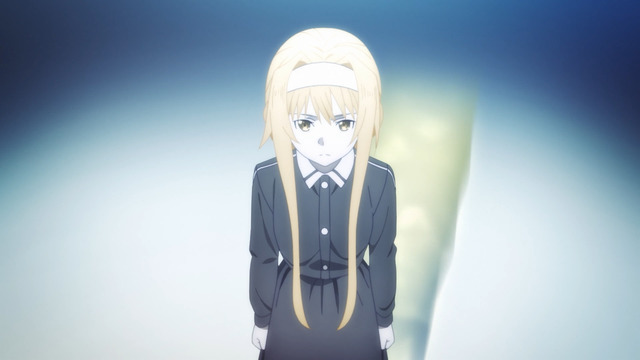
I don't remember Alice S. XXX wearing this outfit before.
If you listen to the commentary track for Sword Art Online The Movie: Ordinal Scale, it's quite obvious the production team changed or rejected a significant number of Kawahara's ideas and scenes. I can only guess at what the movie's original script might have looked like, but I think all but the most puerile viewers can identify with certainty which elements of the television show desperately needed re-working.
Posted in Sword Art Online, Sword Art Online: Alicization, Sword Art Online: Alicization - War of Underworld, Sword Art Online: Ordinal Scale | Tags: Bad Things Happen to Good People, Big Fat Braids, Characters in Need of Better Shows, DVDs and Blu-ray discs, Eyepatch, Haruka Tomatsu, Kanae Ito, Kayano Ai, Light Novels, OP ED, Rape, Sakamoto Maaya, Season Introduction, Sequels, Summer 2020, Superlovely Character Designs, war, War Is All Hell | Permanent Link
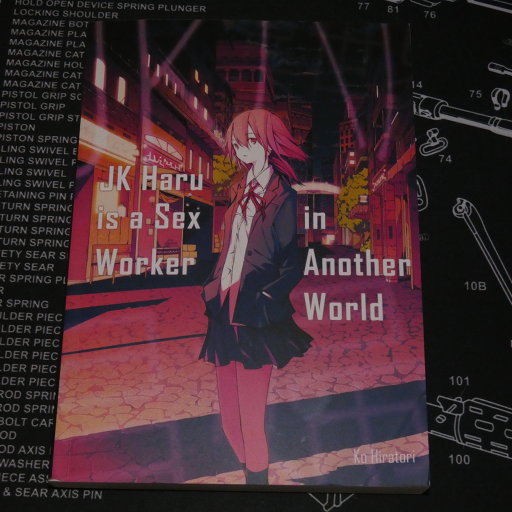
Despite being a light novel, JK Haru is not illustrated.
JK Haru wa Isekai de Shoufu ni Natta (JK Haru Is a Sex Worker in Another World) gained some notoriety last year when a licensed version became digitally available. Hard copies are now in print as well. Being an isekai light novel, the book is somewhat tongue-in-cheek despite the subject matter. However, I believe the tone it adopts appropriately approximates the sort of setup readers might expect in an isekai light novel about prostitution, thereby facilitating its ability to get them interested in the story before confronting them with the uncomfortable realities that correspond with sex work in general and the vulnerability of prostitutes specifically.
That said, JK Haru Is a Sex Worker in Another World is not a grim book, despite a number of unsettling scenes and events. Moreover, the misogyny and violence encountered in the fantasy world setting are not exactly out of line with the sorts of hazards women face in many sectors of our real world. It's a difficult balancing act for the text, contrasting amusing adventures with these threats. And while there is plenty of sex in JK Haru—as you might expect—the scenes are typically presented matter-of-factly and not written to titilate. Sex work in JK Haru is not glamorous, and the book keeps the attention on the work part, not the sex part.
Notably, I never felt as if JK Haru Is a Sex Worker in Another World was deliberately prurient the way that, frankly, so many light novels seems justifiably accused of being. I've seen enough comments on the Twitter to know many readers will disagree with me on this point, but I think this may have to do with one's initial expectations of the book and what sort of demands are placed on it. JK Haru is presented from Haru's first-person point of view, which I think makes it more effective at conveying the bleakness of her world and the impact of the events around her. Likewise, it also better communicates the joy she finds when she pursues various recreational diversions or actually has sex she enjoys. It also avoids presenting the violence in her world or the sadism she encounters as elements the reader is expected to like (unlike the corresponding scenes in some other light novels I might name). There are surely readers who do prefer that sort of content and wish JK Haru had more of it, but I'm inclined to regard that as an indictment against those readers themselves and not the text for obstensibly failing to omit it.
Incidentally, the various twists and reveals in JK Haru Is a Sex Worker in Another World are good enough that I recommend a spoiler-avoidance posture if you expect to read it.
Posted in Books, JK Haru Is a Sex Worker in Another World, RECOMMENDATIONS | Tags: Bad Things Happen to Good People, books, Built for Sin, Economics, Fan Service, Light Novels, May-December Romances, Rape, Sex | Permanent Link
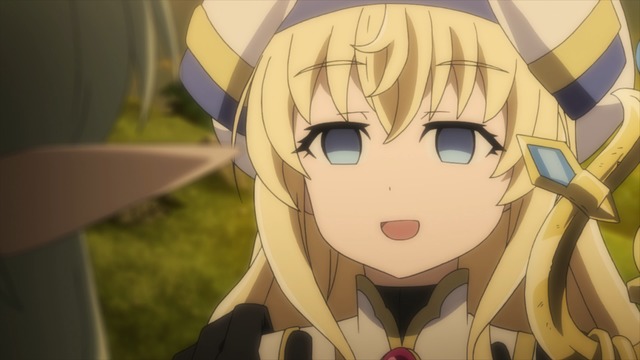
This is the highlight of Goblin Slayer! thus far.
I watched the first episode of Goblin Slayer! when it first aired, found it to be a straightforward adaptation of the manga (it was toned down a bit, honestly), and decided not to watch more. After all, I had only read about a volume or so of the manga before losing interest. (I've never read any of the original light novel.) Somewhat predictably, that episode's content generated a lot of discussion on the Information Superhighway about Goblin Slayer! and its relative merits (or lack thereof). The reactions I saw on the Twitter, at least, were almost uniformly negative.
(more…)
Posted in Goblin Slayer! | Tags: Autumn 2018, Bad Things Happen to Good People, Childhood Friend, Dropped Shows, General Principle, Haruka Tomatsu, Light Novels, Nudity, Rape, Season Introduction, Spoilers, VHS and Beta, war | Permanent Link

Enri put on her best clothes for the visit, but not only did Nfirea
not even bother to change his shirt, it isn't even tucked in.
The third season of Overlord thankfully had only a three-month hiatus following the second season. The break between the first and second season was more than two years, which was entirely too long for casual fans of the anime who had not read the books. A lot of the events that occur in Overlord happen simultaneously or close to it, so it's helpful to keep the timeline and chain of events straight as more and more characters get introduced. That was a lot harder to do when I could barely remember a lot of the context I was supposed to know.
(more…)
Posted in Overlord | Tags: 16-year-old love interests, Bad Things Happen to Good People, Big Fat Braids, books, Light Novels, Rape, Season Introduction, Sequels, Summer 2018, Vampires | Permanent Link
|
|





